How I learned that FGM happens in India
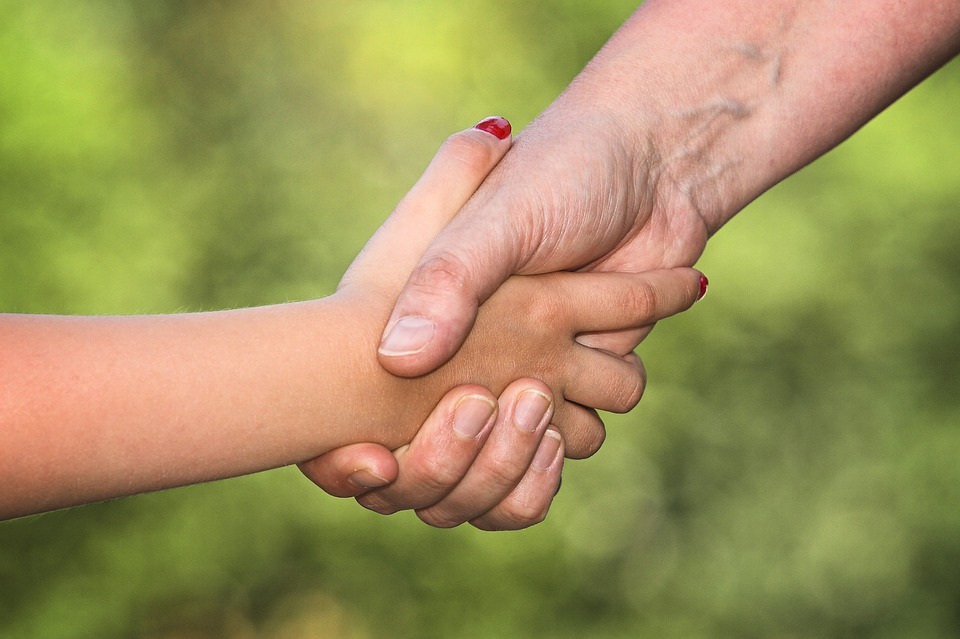
By: Anonymous journalist whose friend underwent FGM Age: 26Country: India “It was supposed to stop me from me doing ‘those things’. I’m not sure if it served the purpose,” M told me. I would have known about this practice much later if I hadn’t met someone who underwent it. As we were getting to know each other, one day M drew my attention to the fact that she was different from other girls. That was when I heard the term female genital mutilation for the first time. “You should read about genital mutilation”, she said. Later that night, I learned about this horrible practice meant to oppress women. I had so many unanswered questions for her. ~ How did she become a part of this? ~ Explaining what happened to you to all your companions must be tiring… ~ Was everyone as sensitive as me when she told them about what had happened to her? ~ Why does a well-educated family still practice it? I called her. That’s when I heard her story. She told me that men don’t take part in ‘matters of female’. She was only six or seven when her maternal grandmother took her for khatna. She thought they were going for afternoon prayers until the point when an old lady laid her on a table and pulled her pants away. But the real terror struck when her legs were pulled apart. All reasoning was silenced just like her protest and this memory was repressed. What does a child know about right or wrong? If the elders do it, it must be for good. Right? “Where was your mother when all of this was happening, did she even know?” I asked her. M said, “I don’t know. She hadn’t joined me when it was done to me. I can’t imagine her watching me go through something like that.” Her mother probably didn’t want to inflict the pain on her, and at the same time, her mother could see there was flawed reasoning behind the practice. Her mother accepted that the tradition had to continue in silence. Life went on as usual until M turned twenty. She was no longer a little girl. After she had sex for the first time, the repressed memories came up. She could no longer hide. She wondered, are my genitals different, am I different because of it? M often felt she was not normal and even felt she was asexual. It was not just the altering of her genitals that made her feel different, but the lack of understanding of her body as well. “Remember I would often wonder if I was asexual because of it? Well, those doubts are gone. I finally know I have the urge to have sex like anyone else,” M said to me to explain the doubts she had around her ability to orgasm. She still remembers the first time her family openly talked about khatna. M was in college and an aunt was visiting from abroad. She heard her aunt speaking to her parents about the “mindless practice of female circumcision.” She joined the conversation, speaking publicly for the first time about her anger for having undergone it. But the conversation ended with her parents saying the following words “Daughter, you will understand later. It has to be done so that the girl doesn’t go out of hand.” Like within most families in India, parents and their children do not speak about sexuality. She couldn’t let her family know she was sexually active. I sense that because parents see pre-marital sex as wrong, this idea has a very big role in the continuation of the practice. Therefore, while addressing FGM we can’t separate it from the need for sex education. Sex education must also include sensitizing the emotional and psychological aspects of sex as well. “How can we bring an end to all this?” I asked her the last time we spoke. “One thing is for certain,” M said. “I am not making my daughter go through this.” Her decision is significant. Pledging not to continue it on the next generation is important, particularly when perhaps twenty years ago, many women never made this pledge. “Will you ever talk publicly about it?” I asked her. “I don’t know”, she said, “It’s not like I’m not trying to make any difference. I just feel I’m not ready to be public and deal with the attention I would get afterwards.” Her answer made me realize that the people who are affected by the reckless act are not the only anchors of social change. We needed to focus equally on institutions that allowed such harmful traditions to continue. Speaking to the religious heads about FGM is important. The most crucial aspect of reforming this age-old practice is educating people. Simply banning it by law is not the solution because this may lead some families to carry out khatna in secret, on their own. She said, “Today’s young priests who get more educated think like us. I’m sure if they are encouraged to bring about changes, it will have a larger impact on the community.” As a journalist, I’m sharing the story of my friend, because I believe the media’s role is critical in achieving social justice, and helping to get those larger institutions to think about creating change.
Part-time Translator Job Opportunity in Mumbai

Looking for an individual willing to assist in translation between Gujarati and English, with a preference for those also able to speak Lisan al-Dawat, for the month of July in Mumbai and surrounding provinces. The translator will be working closely with two student researchers from the University of North Carolina and Trinity College Dublin who will be conducting research on the Dawoodi Bohra community via interviews with different members of the Dawoodi Bohra community. Familiarity with the community and culture of Dawoodi Bohras is strongly preferred, as ideally, the translator would help the student researchers by helping coordinate interviews and acting as a liaison between community members and researchers. Pay will start at ₹ 250 / hour, with an average of 10-15 hours per week of work available. Pay and hours are very flexible. To express interest or for further information, please email CV to: mgfmumbai@gmail.com
FGM before the Indian Supreme Court

By: Koen Van den Brande Age: 55Country: India It was to be expected… The Indian Supreme Court has been asked to look at the practice of ‘khatna’ – commonly known as FGM (Female Genital Mutilation) as a result of a Public Interest Litigation filed by Sunita Tiwari, a Delhi based advocate. There was a time, not so long ago, when the Suleimani community was known for people who showed great wisdom and leadership. For example when the educator, jurist and author Asaf Ali Asghar Fyzee advocated “the need to incorporate modern reforms in Islamic law without compromising on the ‘essential spirit of Islam’.” FGM has been in the news of late in India as well as the US, the UK and Australia, as a result of legal action taken against practitioners of ‘khatna’ and discussions on how to make existing legislation more effective. In the Mumbai-based Suleimani community, which I belong to, we have also been having some discussions on how to address this practice, which remains prevalent albeit more and more in what I would call an ‘intellectualised’ form. After all, we are not talking here about primitive tribal communities as in some countries in Africa, where in 10% of the cases, we can talk about ‘mutilation’ in the fullest, most horrific, sense. The community is well accustomed with the Islamic principle that the law of the land is to be respected. In the Prophet’s (PBUH) words ’Love of one’s country is a part of one’s faith” So at one level, the introduction of a new law would be the easiest way to address the issue… Or would it? In the UK such a law has been on the statute books for many years without ever leading to a single case in court and yet it is well-known that the practice continues there for thousands of girls. Or take the case of Egypt, where despite a law which declares the practice a crime, 98% of women continue to be cut. As an Egyptian government official comments in the highly informative as well as emotional documentary The Cutting Tradition, soberly narrated by Meryl Streep, you cannot put the entire population of a country in jail… A study in Senegal concluded that the introduction of specific legislation can be helpful, where it complements other efforts to educate and gain support for abandoning such a practice. However the study also observed that such legislation without the necessary work on the ground can build resistance if it is primarily seen as interference in a religious practice. In India there is no lack of existing legislation under which FGM would be seen as a criminal offence, as Maneka Gandhi, Minister for Women and Child Development recently spelled out in no uncertain terms, in response to a referral by the Supreme Court. In addition, supra-national bodies like the United Nations and the World Health Organisation take a clear stand on the subject. India is a signatory to the UN’s Universal Declaration of Human Rights, but it was not even on the radar of the UN until a group of women submitted a petition to recognise India as one of the countries where FGM is still practiced… In India there is the additional problem that the Muslim minority is always likely to find a new law addressing ‘khatna’, considered by some a ‘religious practice’, an imposition by a Hindu-dominated government – even if the law makes perfect sense. Such resentment could result in the practice being driven underground and once again reverting to the earlier back-alley horrors, which so many women have attested to. In fact, following the successful efforts of Sahiyo and others, a new site has recently been set up protesting ‘interference’, as expected. It would of course be much better if the two sides agreed to sit together to work out a sensible way forward. Sunita Tiwari is quite clear. She wants ‘khatna’ to be made an offence which is ‘cognizable, non-compoundable and non-bailable and offenders to get maximum punishment and penalty’. In reality, and for many Suleimani families today, ‘khatna’ has become what a father of two daughters called ‘a minor procedure’, when I asked him about it. That is to say that the ‘intellectualised’ form of the practice already insists on a medical procedure which simply removes a small bit of skin — the clitoral hood. Such a procedure may be justified and carried out legitimately to assist a grown-up woman. Which still leaves the question how one can justify making that decision for a child. As a result of my initial conversations and a bit of research, I wrote an article a while back in which I advocated a possible approach which would respect the view of those who consider this a spiritual matter and the rest of us. I believe this approach would also address the urgent need for reform and recognise that a large majority of the world has deemed this practice, for some time already, a crime against a girl child. What I proposed was that the community leaders could simply teach and mandate that a woman had to be of the age of consent to allow what should then be a largely symbolic ‘cut’ and that it should always be performed under medical supervision. At least one of the Bohra community’s spiritual leaders seems to have taken a similar view. He was reported in the media recently as saying ‘FGM should be by choice for adults’. Unfortunately this statement has become somewhat ‘politicised’ due to the succession struggle which is currently before the court in Mumbai. This proposed approach would also address another ‘law’. It could help resolve the current dilemma for any medical practitioner who would prefer not to break his or her Hippocratic oath. This oath – ‘do no harm’ – insists that a doctor can only perform a procedure on a patient which is actually in that patient’s interest. It must be difficult for any doctor to argue that ‘khatna’ is
Despite backlash, Sahiyo will continue to work with the community

The World Health Organization (WHO)’s guidelines on the management of health complications from female genital mutilation/cutting states that the “involvement of health-care providers in performing FGM is likely to confer a sense of legitimacy on the practice and could give the impression that the procedure is good for women’s health, or at least that it is harmless.” Unfortunately, this is exactly what is happening in India. It is difficult to rationalize how a medical professional who has taken a Hippocratic Oath to “…abstain from all intentional wrongdoing and harm, especially from abusing the bodies of man or woman, bond or free,” can promote khatna in India. In one part of the world doctors from our community are tried for violating the laws of their country (United States and Australia), and then we have doctors in India who are using the argument of religious freedom to advocate for a practice that is performed for non-medical reasons on a non-consenting minor girl. We have seen letters issued by various jamaats across the world, who use the hadeeth: حُبُّ الْوَطَنِ مِنَ الإِيمَانِ (Hubbul-Watan Min al-Eemaan), which translates to “Love of one’s homeland (country) is from faith”, to denounce the practice. Contrary to this, we have supporters of khatna, in India, who wish to continue with the archaic custom, despite the Indian government taking a stand and stating laws, the Indian Penal Code and the Protection of Children against Sexual Offences Act, against the practice. These are inconsistencies and we question them. Opposition to khatna is not at all unexpected. We had anticipated it, at some level, looked forward to being able to engage in a healthy exchange of views on a democratic platform. Unfortunately, in the last week, the premise of the opposition we have heard is based on half-truths. The fact that such strong opposition exists shows that our efforts to engage the community have led people to discuss the matter and question the practice. Sahiyo will continue to work with the community to bring an end to the practice in a proactive way. We add that that this practice is not only continued by Dawoodi Bohras. There are those from other South Asian communities who have spoken out against it too. Sahiyo focuses on engaging these communities, as well, but clearly, the largest group Sahiyo continues to engage is the Dawoodi Bohra community. We draw strength from knowing the high levels of education of women within the Dawoodi Bohras and are very hopeful that with a healthy dialogue we can re-evaluate this practice in the present day and come up with a solution that is in the best interests of all children and women. Last but not least, we would like to say that Sahiyo is saddened to be a target of deliberate slander, especially when the messages being passed around on WhatsApp and other social media platforms are blatantly untrue. To clarify a few doubts – Sahiyo has not started a petition addressed to the Syedna and we have not filed the PIL to ban khatna in India, either. We are only trying to engage with the community to break the silence around a practice we see as a violation of child rights and human rights. We are trying to ensure that the community is able to take an informed view on a rite of passage that can be, and sometimes is, harmful to children. We have always welcomed healthy discussion and now, more than ever, we think it is critical to be able to engage in a mature conversation on the subject. This is what we are trying to do through our advocacy campaign, Each One Reach One 2 that has been jointly launched with WeSpeakOut this Ramzan. The campaign will create means of effective communication to discuss the subject of khatna amongst various stakeholders. We hope that our brothers and sisters are able to use these and debate the issue to be able to understand the long-term and short-term pros and cons of this practice, rather than let emotion and religion alone influence their decision-making.
I underwent Female Genital Cutting in a hospital in Rajasthan
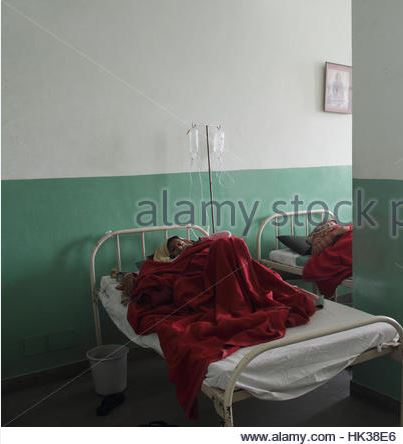
(Trigger Warning: Below is the account of one woman’s experience with FGC. We thank her for being brave and sharing her story with us) By: Jamila Mandsour Age: 25Country of Residence: KuwaitCountry where Khatna took place: Banswara in Rajasthan, India That day, I was taken to the hospital to see my newborn cousin. Although the mom, my aunt, and her baby boy were already discharged, my mom told me they were still there. I was five and so very excited to see the baby. My excitement crashed when I was thrown into a dark room and a nurse put me on a stretcher. I screamed and was slapped on my face. My voice was silenced. After ten minutes, I came out of the room wounded and in tears. I had no idea what happened to me in those ten minutes because I fainted. I was partly aware that a knife had been held towards my genitals, but a five-year-old does not have the guts to ask the adults why she was thrown into a dark room. My brain did not have the ability to understand that my legs were spread to cut some skin from my clitoris. After coming out of the room, I was not aware of that injury and could not understand why I was bleeding. Since childhood, I have been an active person, always running from here to there. But on that day, after leaving the hospital, I was totally exhausted from the crying and yelling because of the pain that knife had caused me. I went home and slept, not waking until the evening. Upon awaking, I saw that blood on my mattress and finally, I asked my aunties (my mother’s sisters) why I bled. I don’t remember any of them answering me. They told me not to wear my underwear for the rest of the day. Even at that young age, I felt awkward about going without my underwear. I wanted to rise from my bed, to run around and do my daily somersaults, but I could not because of my injuries. For the next few days, I couldn’t even walk properly. That day left a mark on my memory forever. After a few days, I returned to my regular daily routine. Not thinking about that day until eight years had passed and my sister suffered through the same thing I did. I was thirteen then, and I can recall her sad face, filled with pain, asking me the question, “Why was I cut?” What could I say to her? I had no answer to give her and it broke my heart. For the second time in my life, I went through the same emotional pain and felt helpless, keeping mum on the subject. An invisible hand had slapped me once again with the reality of what I and my sister had undergone. Even now at this moment, while I write this story of mine, chills run down my spine. In my 20s, for the first time in my life, I really tried to find answers to my question of why we were cut. I got no answers. One thing I was sure about: it shouldn’t have happened to me in the manner that it did, even if the religious authorities had deemed it valid. Even today, not many want to talk about this hideous act, but every pain has a scream and on some days the pain reaches out and my scream is loud. In time I did get answers, but I still wonder why the community practices this ritual when there is nothing reasonable about it. Out of a hundred women, I think ninety-eight would either not know of any scientific or religious reason to perform it, or would say they do not want to discuss it with others. If some women are adamant about being silent and feel guilty about speaking about khatna, then I wonder why they make sure their kids undergo it? I don’t know how, to sum up this article. One thing I know is that khatna is painful, it is harsh, torturing, shattering, and heart-breaking. It affects the sexuality of women and causes emotional and mental suffering (this is true in my case). While writing this piece, I couldn’t control the tears flowing down my face, as it expressed my pain. I request all of you who read this story of mine, please stop practicing khatna. One piece of skin should not decide the character of your daughter. Please be sensible about what happens to your baby girl.
To cut or not to cut? Let our daughters grow up and decide
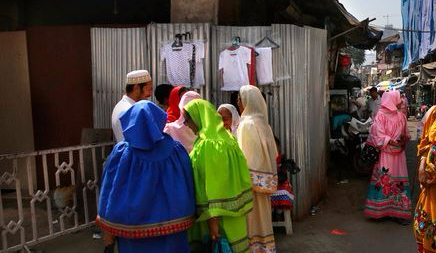
By: Insiya Age: 34Country: Mumbai, India As I belong to a well-known and educated family, I was always given a chance to think outside the box. My parents were always supportive irrespective of what our community norms were. I was educated and given the same rights as my brothers and my voice was never unheard and my opinions were also considered. I was a daughter but treated as a son. But as our community was a little more tightly knitted, everyone had a say in what happened to me, and with all the women in my family influencing us, my mom agreed at the age of seven that I would have to go through the ceremony of Khatna. I still remember that day clearly. My mom and masi (aunt) took me to this woman’s house in Pune to get the job done. I might not remember the pain now, but the fear, the sadness and distrust from that day remain. I know many of my cousins still ask me, “Why are you so upset about what happened? Has it changed us in any way?” I agree Khatna might not have changed my desire towards sex, but it has changed my outlook towards our mothers who told us that anyone who touched us forcefully was wrong, especially in our private areas, but then they, themselves, took us to an unknown woman, a stranger who pulled down our pants and touched us. How is what this stranger did any different from sexual abuse? Why don’t our mothers or grandmothers or aunts think that seven is not an age where children are old enough to understand what is happening to them? Why don’t they realize that this may leave an impact on us that might make our parents regret their decision later on? I don’t remember the pain of childbirth, but I remember the emotions I felt. That’s the same for these little girls. I don’t think I can decide if Khatna should be abolished or not for adult women, but, I am sure Khatna shouldn’t happen to young kids. Childhood is about making sure your kids are safe and that they trust you to not scar them. Let our girls grow up. Inform them of any changes that we might plan to do to their bodies. Let’s educate our kids about our religion, not scare them into practices. I know many people who will disagree and they are welcome to do so, as I only want to share my point of view. I am a mom of two girls. I know I can make their lives better by not forcing them into my or our elders’ beliefs. I want to educate them that our community is a progressive community where we are confident, educated women, who are taught to be entrepreneurs, and who have the right to choose the path we desire. For all the mothers of daughters in our community, please take the time to think about what I am saying. Let our daughters grow up and make their own choices. Let’s not decide on their behalf. This article was published in Gujarati on December 5, 2017. You can find the Gujarati version here.
‘I want Bohras to wake up and stop practicing Khatna’

By: Anonymous Age: 32 Country of current residence: Bahrai I’m a victim of FGM and this is my story. It’s the same as every other FGM survivor. India. A dingy house. An old woman. A blade. Pain. Blood. Being given chocolate. And then being yelled at to stop crying. And the thing that hardly anyone talks about is how ANGRY it makes you and how you can’t find ways to release the anger. It’s been 25 years and I’m still so, SO angry. Why was a piece of me cut off for an unnecessary reason? Why was psychological trauma inflicted on me at such a young age? Why am I suffering from horrible period pain every month just because my mother blindly followed what was expected of her to do? Why do I have to feel the pain of seeing the guilt and shame on my mother’s face now whenever this topic is raised because she hates herself for what she did? And why is it STILL being done to little girls who don’t have the power to stop it? It makes me mad, mad, MAD! And this always makes me wonder how others follow this religious leader or even stay in this community. Why don’t more Bohras question the teachings? Why don’t they protest? Does the dream of heaven make them so blind that they approve of abuse on young girls? I’m so, SO happy to see FGM get media traction and be publicized for the world to see. I want to see FGM STOP. Let the leader declare that khatna needs to be stopped so the Bohras who follow his every command will stop mutilating their daughters. I want Bohras to realize they CAN decide for themselves what is right and wrong. Cutting off a part of girl children’s genitals without their consent, for no medical reason, is completely, and unequivocally wrong.
The Detroit doctor arrests are an opportunity to talk about Khatna
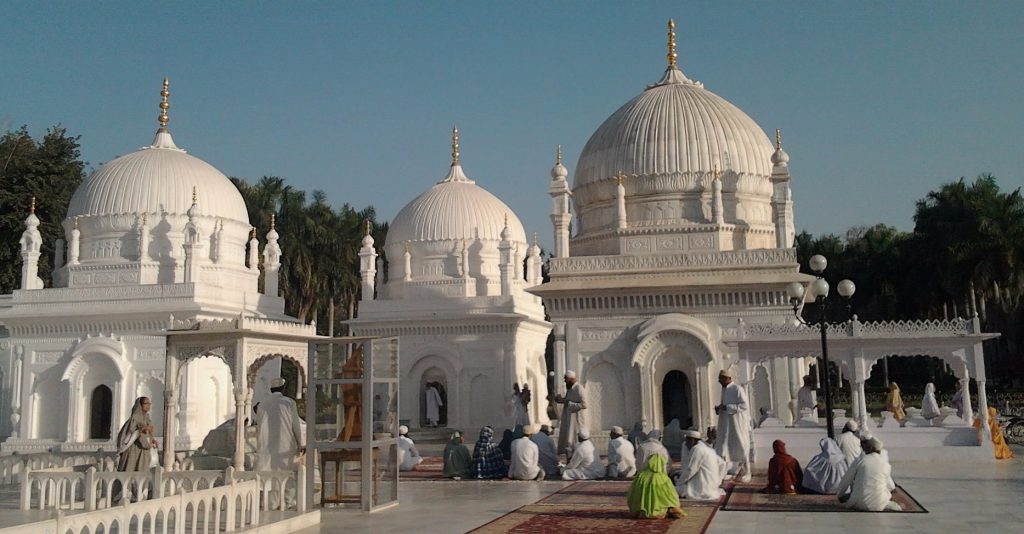
By: Anonymous Age: 33Country: Pune, India Even though I clearly remember when ‘khatna’ was performed on me, it wasn’t until I was a teenager that I first started to question this practice within the Dawoodi Bohra community. It always felt wrong, but if my mother, sister, and seemingly everyone else in the community embraced it, who was I to question? I had been an obedient little Bohra girl – attending the mosque, fasting, and doing everything exactly as it was expected of me. As I reached my teens, however, the restrictions I had as a Bohra woman grew ever more oppressive. My curiosity led me to start looking for any information I could find about ‘khatna’ – but to be honest I didn’t even know what to type into Google! When I finally figured it out, gory pictures of female genital mutilation in Africa filled my computer screen, but there was little or no information about it being practiced within the Bohra community. Talking about it within the community was obviously taboo, but I did have a college friend, a Bohra girl my age, who I confided in. “I think we may have some problems when we grow up, and we may never be able to enjoy sex,” she said. That was the limit of her knowledge and she was as confused as I was. My anger continued to grow – many rules within the community, especially for women, were illogical, outdated and absolutely unnecessary. And ‘khatna’ was the cruelest of them all. More than my own experience, the hardest time for me was when my older sister’s daughter turned seven (the age when ‘khatna’ is performed), and it was clear that my sister and mother were planning to continue the tradition. I felt helpless and hopeless seeing my little niece in fear. Seeing her in pain the night after she was cut saddened me to the core. This cruel ritual was so deeply rooted in religious and cultural beliefs that it would be very difficult to break. If any change had to happen, it had to happen from within the community – but how, when no one was even willing to talk about it? As news about the three doctors getting arrested for performing ‘khatna’ on young girls in the US spreads far and wide, it becomes urgent and extremely important for us within the community to talk about it. I am sure that there isn’t a single woman in the community who hasn’t questioned this practice at one time or another. After all, how can a mother willingly subject her daughter to this torture? Instead of hiding our heads in the sand and pretending that what is happening in Michigan does not concern us, we need to use this opportunity to talk and question. Having grown up in the community, I completely understand the nuances of this problem – no Bohra wants to talk about it because it involves a private part, a sexual organ of a woman, and talking about sex is taboo. But we can get together in small groups of family and friends to reexamine this outdated ritual. There are now non-profit organizations, like Sahiyo, committed to creating awareness and educating the community. There is enough scientific data to prove that there is nothing beneficial about this ritual. Those of us that feel strongly need to find avenues to share our experiences, whether it is through schools and colleges, other community organizations, or signing petitions. We need to voice our anger with a system that threatens its people and brainwashes them to believe that gruesome acts like ‘khatna’ are for their betterment. I have so many Bohra friends across the world who have little girls and others who will have children in the near future. Of course, they love their daughters, and would rather not subject them to this cruelty, but the pressure to conform is stifling and very few have the power to stand up to it. Our right to think independently has been stripped away from us, and we don’t dare to question our religious leaders. Every single day, several girls suffer this torture all over the world – and it affects their lives forever. Time is passing quickly, and we need to rise up and demand that community leaders put an end to this practice NOW. This article was translated in Gujarati on January 16, 2018. Read the translation here.
Thaal Pe Charcha: A Sahiyo flagship event where Bohra women bonded over food
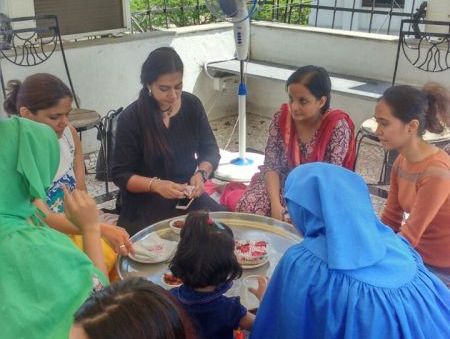
In February, Sahiyo held an event titled Thaal Pe Charcha (loosely translated as ‘discussions over food’), in which 16 Bohra women from Mumbai came together to discuss – for the first time – the challenges of living as young girls and women in the tightly knit Dawoodi Bohra community. Invitations were sent out through word of mouth, and 16 women in their 20s and 30s signed up for the unique event. A few came with their friends, two with young children, one with their family member, while others ventured alone, but all of them attended Thaal Pe Charcha with a desire to bond with other women from the community and discuss a variety of issues affecting their lives. Over a traditional Bohra lunch (one mithaas, one kharaas) the women opened up with their opinions on topics such as the pressure to marry early, the extreme control exercised by religious authorities on family life, the fear of social boycott and the consequent lack of freedom to speak out against social norms. What was evident during the three hours of food and bonding was shared sense of pride the women felt about being able to stand up for themselves within their families – to stand up for their right to an education of their choice, to choose a certain career or spouse, or to have their own set of individual beliefs. Sahiyo will be organizing more Thaal Pe Charcha events in Mumbai during the course of the year, for Bohra women of different age groups. If you are interested in attending a Thaal Pe Charcha event and would like to be kept informed, mail us at info@sahiyo.com After all, why should all charcha happen over chai?
I underwent Khatna but did not let it happen to my daughters
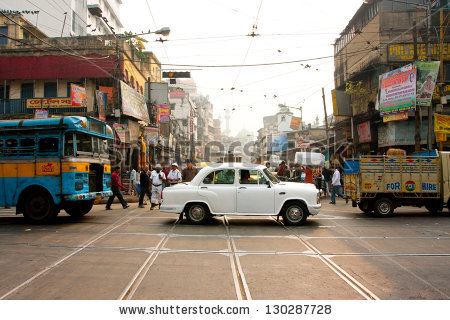
By: Anonymous Country of Current Residence: United StatesCountry of Birth: IndiaAge: 57 It was a day in June, 1966, in India. I was seven years old and sitting with my mother, listening to a story she read to me from a newspaper. Midway through reading the story, she casually mentioned to me that we were going to Aunty R’s house the next evening with my grandmother as well. I was excited to go somewhere with my mother and grandmother, and to take a car ride to get to the place. Out of curiosity, I asked my mother why we were going over to Aunty R’s house, and she told me we were going for something very important that needed to be taken care of. On the car ride there, I heard my mother and grandmother discuss that they could not accept water to drink from Aunty R if it was offered to them, because the work she carries out is considered dirty. Being of an inquisitive mind, I asked my mother what she meant. She shushed me and said, “You are too little to understand.” On reaching Aunty R’s house, we were sent upstairs and sat down in a big hall. A few minutes later, she joined us and sat with us and talked for a bit. Then, she went inside another room and came back with a big white sheet which she spread out onto the floor. As she did this, I watched her movements with a lot of confusion. She then asked me to come lie down on the sheet and to shut my eyes, which I did. She covered me with another sheet and pulled my panty down. The next thing I felt was a pinch down there, and I screamed. She told me not to worry. All was done. On our way home I felt discomfort and my mother told me that all would be fine and that there was nothing to worry about. When we reached home I needed to use the bathroom and saw some blood oozing out of me. It scared me a bit. Again, my mother convinced me that all would be fine. I asked her what our trip to Aunty R’s was about and why I had to undergo it. She said, “all little girls go through that procedure.” After a few days, I forgot about the incident. As I grew older and I went into my teen years I realized that for no good reason something had been done to my private part. Something that was not very much required. After speaking to my mother about it, I realized she had gotten it done to me only because it was a tradition. She had gone through the same process. It had no religious significance. Years went by and one day, I became a mother too. When my daughter came of age, I made the decision that I would not let her go through this mental torture, which was just a tradition and had nothing to do from a religious standpoint. When I made this decision, neither my mother nor my mother-in-law objected to it; they did not pressure me into having my girls undergo the ordeal. To conclude, I would like to add that it definitely did affect my sex life negatively and I did not want the same to be true for my girls. This article was later posted in Gujarati. Read the full article here.
